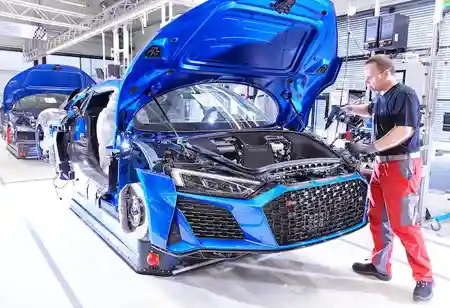THANK YOU FOR SUBSCRIBING
THANK YOU FOR SUBSCRIBING
Be first to read the latest tech news, Industry Leader's Insights, and CIO interviews of medium and large enterprises exclusively from Auto Tech Outlook

By
Auto Tech Outlook | Wednesday, November 23, 2022
Stay ahead of the industry with exclusive feature stories on the top companies, expert insights and the latest news delivered straight to your inbox. Subscribe today.
Automation is consuming industries, and the automotive industry is no exception.
FREMONT, CA: The automobile business is introducing increasingly advanced robotics and other cutting-edge technologies. Collaborative robotics, robotic arms, and the Internet of Things are already powering a significant portion of autos.
Consider some significance of digitalization in the said industry:
Today, digitalization is transforming sectors to become more transparent.
Automation trends is a broad category. However, industries, especially the automotive industry, strive to set a standard for others—imagining and transforming plants into world-class manufacturing units. For all of this, today's trends include digitization of their environment, dashboarding to capture findings, and using analytical tools to provide valuable insight for decision-making.
Today's digitalization is making sectors more transparent, visual, and organized. The data generated by digitization makes things easier and simpler. High-level analytics are providing deep insight into the issue and a better grasp of the core cause. Working in this environment improves skills and creates better and healthier working circumstances.
Today, any firm must execute things optimally so that everything is swift and responsive. Now, not only are more items made from the same line but there are many variations. The need to meet market demand is considerable, including open orders and made-to-order. If manufacturers don't change, their business will suffer. This is where flexibility comes in; manufacturing lines today must be flexible enough to make products that meet market and customer expectations. And automation plays a huge role in all of this. With automation, the plan must be extended and unambiguous. Organizations must identify their long-term goals and break down their actions to achieve them. Choosing the proper partner who can design the automation is also essential. So, the straightforward automation approach should be phased into the business plan.
More jobs on the shop floor are made safer by automation solutions
Conveyor systems have been around for decades. Many automotive production plants have been using scalable, modular automation solutions for years to produce multiple versions on a single line. Customers now expect customized car components, putting pressure on suppliers to embrace such manufacturing techniques. Automation solutions, such as linear track systems replacing conveyors, make batch size-1 production as cost-effective as mass production and benefit from rapid time to market. Predictive maintenance and condition-based maintenance procedures improve machine and line availability while minimizing downtime. Adding inspection systems enhances the quality and reduces rejection and waste.
Developing a strategy for technology adoption starts with a thorough grasp of the requirements at all levels and entities involved. Every site and factory have its optimal plan; thus, there is no universal rule. To reap the benefits of technology, an organization must first identify the holes in its existing processes and deploy solutions to fill them. A strategy for deployment and a systematic approach to implementing these following-generation automation technologies are also required for success.
With digitalization and automation, more jobs are safer, and machines are smaller. Human-robot collaboration (cobots) has blurred the lines between people and robots. Workplaces would undoubtedly improve. With change being the only constant, reskilling workers will be critical. Existing jobs may become obsolete. Workforce upgrading, training, and reskilling would be required at all levels.
See Also: Top Workflow Solution Companies
 Copyright © 2025 AutoTech Outlook. All Rights Reserved | Privacy Policy | Subscribe | Sitemap | About us | Feedback Policy | Editorial Policy
Copyright © 2025 AutoTech Outlook. All Rights Reserved | Privacy Policy | Subscribe | Sitemap | About us | Feedback Policy | Editorial Policy 



